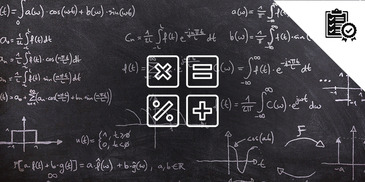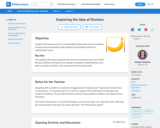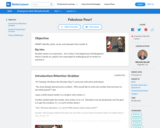
This lesson connects calculating elapsed time in a real world setting, using actual train schedules.
- Subject:
- Mathematics
- Material Type:
- Lesson Plan
- Provider:
- BetterLesson
- Date Added:
- 12/01/2022


This lesson connects calculating elapsed time in a real world setting, using actual train schedules.

Applying the measurement of elapsed time to a person's daily schedule helps students understand the reason for understanding time.

Students develop their understanding of multiplication by grouping objects into equal groups to model the factors and products.

Comparing the number of objects in two groups, using one-to one-correspondence, is a foundational skill that students will build on as they begin to compare numbers. This lesson will allow students to practice this skill in small groups. Pictures and videos of the lesson in action are included.

How can you represent the area of a diagram using numerical expressions? Students apply their knowledge of area and order of operations to match area diagrams with numerical expressions.

How can you represent the area of a diagram using numerical expressions? Students connect their knowledge of area and equivalent expressions to the commutative and distributive properties for day 2 of this investigation.

Develop a relationship between the ratio table and the coordinate grid.

Students will be able to estimate the lengths of objects by mentally partitioning the lengths into inches. A video, worksheets, and a detailed lesson plan are included.

Students will be able to estimate the lengths of objects by mentally partitioning the lengths into inches.

Students use place value vocabulary to write excellent mathematical explanations about why a comparison statement is true or false.

Set up a culture of listening and understanding in your classroom with this meta cognitive lesson on what our brains do when we listen.

Students explain shape attributes using written explanations.

What is pi, anyway? Students explore the relationship between circumference and diameter by measuring a variety of circles and use it to derive the formula for circumference.

Learning about exponents helps students think about and understand expressions.

Students will use area models and expressions to help build a solid foundation of how the distributive property works.

Students will observe and try to model slightly above-level division problems as they practice expressing math questions and possible solutions in mathematical terms.

Use real world examples to evaluate and solve expressions.

Students continue to work on understanding and comparing ratios.

Students identify, write, count, and represent the number 4.

Students color seasonal images and sort them 3 different ways.